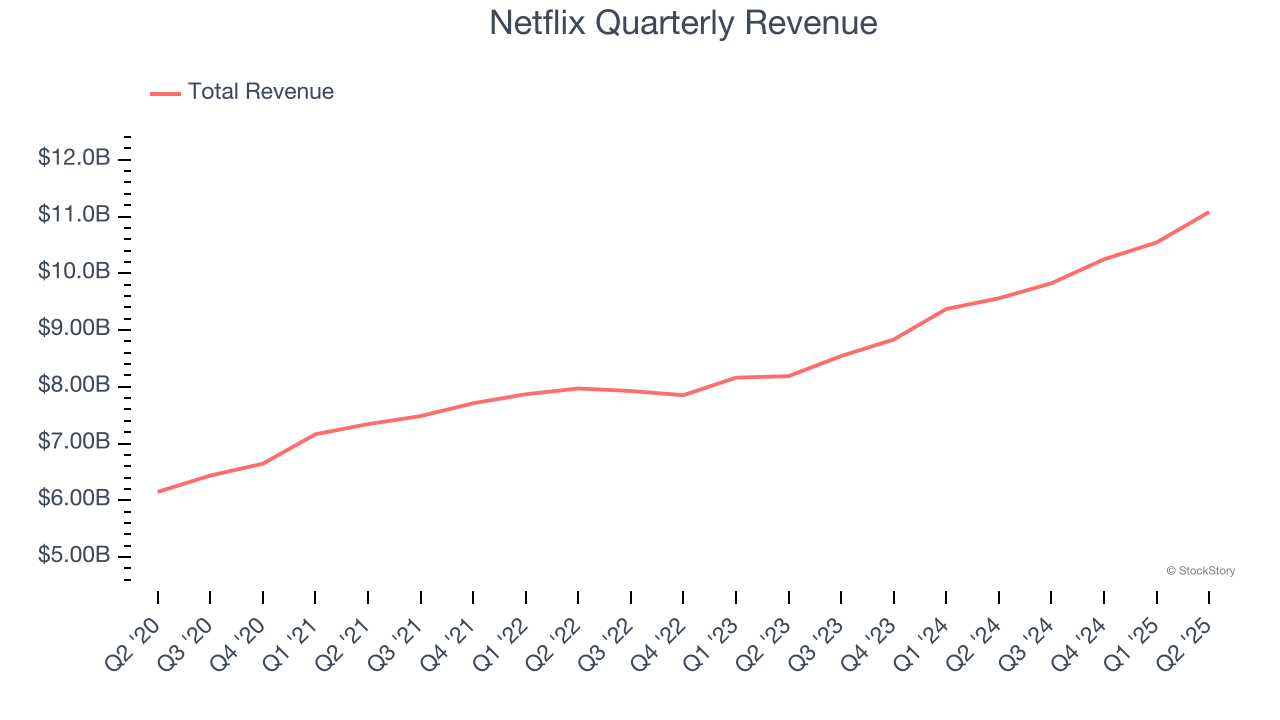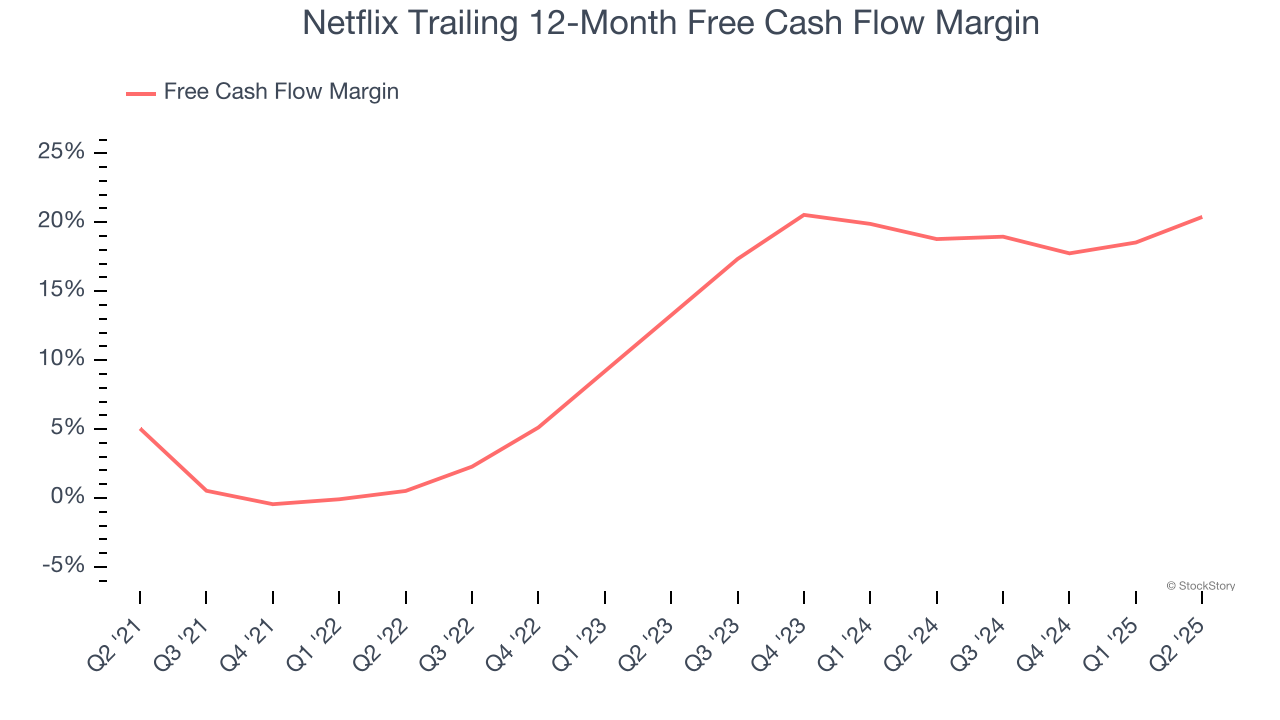
Streaming video giant Netflix (NASDAQ: NFLX) met Wall Street’s revenue expectations in Q2 CY2025, with sales up 15.9% year on year to $11.08 billion. The company expects next quarter’s revenue to be around $11.53 billion, coming in 2% above analysts’ estimates. Its GAAP profit of $7.19 per share was 1.7% above analysts’ consensus estimates.
Is now the time to buy Netflix? Find out by accessing our full research report, it’s free.
Netflix (NFLX) Q2 CY2025 Highlights:
- Revenue: $11.08 billion vs analyst estimates of $11.08 billion (15.9% year-on-year growth, in line)
- EPS (GAAP): $7.19 vs analyst estimates of $7.07 (1.7% beat)
- The company lifted its revenue guidance for the full year to $45 billion at the midpoint from $44 billion, a 2.3% increase
- EPS (GAAP) guidance for Q3 CY2025 is $6.87 at the midpoint, beating analyst estimates by 2.9%
- Operating Margin: 34.1%, up from 27.2% in the same quarter last year
- Free Cash Flow Margin: 20.5%, down from 25.2% in the previous quarter
- Market Capitalization: $532.1 billion
Company Overview
Launched by Reed Hastings as a DVD mail rental company until its famous pivot to streaming in 2007, Netflix (NASDAQ: NFLX) is a pioneering streaming content platform.
Revenue Growth
A company’s long-term performance is an indicator of its overall quality. Any business can have short-term success, but a top-tier one grows for years. Over the last three years, Netflix grew its sales at a decent 10.3% compounded annual growth rate. Its growth was slightly above the average consumer internet company and shows its offerings resonate with customers.

This quarter, Netflix’s year-on-year revenue growth was 15.9%, and its $11.08 billion of revenue was in line with Wall Street’s estimates. Company management is currently guiding for a 17.3% year-on-year increase in sales next quarter.
Looking further ahead, sell-side analysts expect revenue to grow 13.8% over the next 12 months, an acceleration versus the last three years. This projection is particularly noteworthy for a company of its scale and suggests its newer products and services will spur better top-line performance.
Software is eating the world and there is virtually no industry left that has been untouched by it. That drives increasing demand for tools helping software developers do their jobs, whether it be monitoring critical cloud infrastructure, integrating audio and video functionality, or ensuring smooth content streaming. Click here to access a free report on our 3 favorite stocks to play this generational megatrend.
Cash Is King
If you’ve followed StockStory for a while, you know we emphasize free cash flow. Why, you ask? We believe that in the end, cash is king, and you can’t use accounting profits to pay the bills.
Netflix has shown robust cash profitability, driven by its cost-effective customer acquisition strategy that enables it to invest in new products and services rather than sales and marketing. The company’s free cash flow margin averaged 19.6% over the last two years, quite impressive for a consumer internet business.
Taking a step back, we can see that Netflix’s margin expanded by 19.9 percentage points over the last few years. This is encouraging, and we can see it became a less capital-intensive business because its free cash flow profitability rose more than its operating profitability.

Netflix’s free cash flow clocked in at $2.27 billion in Q2, equivalent to a 20.5% margin. This result was good as its margin was 7.8 percentage points higher than in the same quarter last year, building on its favorable historical trend.
Key Takeaways from Netflix’s Q2 Results
It was encouraging to see Netflix raise its revenue and operating margin guidance for next quarter. We were also glad its EPS exceeded Wall Street’s estimates. Overall, this print had some key positives, but investors were likely hoping for more given the rich valuation. Shares traded down 1.1% to $1,262 immediately after reporting.
Is Netflix an attractive investment opportunity right now? When making that decision, it’s important to consider its valuation, business qualities, as well as what has happened in the latest quarter. We cover that in our actionable full research report which you can read here, it’s free.
